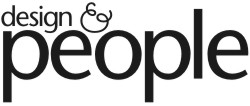(May 3rd, 2010, Constructionweekonline.com)
The Soapbox is an opportunity for each of our Advisory Board members to express an opinion on an important industry issue. This month, Conrad Gonsalves suggests that design is also about making a difference in people’s lives.
While we flip through these pages, appreciating the commendable work done by our fellow designers, it will perhaps not go unnoticed that somewhere in the region of 90% of this published work will in reality benefit not more that 10% of our population. We may get defensive and proclaim our commitment to Universal Design. But how universal is our outreach if the physically challenged, little children or the temporarily disabled, whom we are trying to include in our design solutions, still belong to this elite band of urban society?
And while we scream green design and strive to build ZEB or (net) zero energy buildings, are there lessons to learn about indiscriminate consumption from the masses, with no access to power grids, who do live in zero-energy buildings out of sheer necessity?
Everybody benefits from good design, but ‘not-for-profit’ organisations and ‘communities-in-need’ cannot afford professional design services.
Or have we scared them away with our glitzy 3Ds, stylish walkthroughs, and the culturally elite value system we project? Fortunately, while the Corporate World is trumpeting their initiatives in CSR (Corporate Social Responsibility) and Social Entrepreneurs are gaining acceptance as mainstream professionals, it is heartening to know that in the area of design, a host of socially-responsible initiatives have emerged.
Tim Brown, CEO of IDEO, takes an approach to design that digs deeper than the surface, explaining that designers need to broaden their reach from the crafting of objects to the shaping of services, experiences and organizations. ‘Design Like You Care A Damn’ reminds us of the greatest humanitarian challenge we face today: to provide shelter. The physical design of our homes and neighbourhoods shapes every aspect of our lives. Yet, too often architects are desperately needed in places where they can least be afforded.
‘Design Revolution’ (D Rev)’s mission is to start a design revolution in the way products are designed, marketed and distributed, and enable new sources of income for the impoverished people who represent the other 90% of the world.
‘Design that Matters’ (DtM) has built a collaborative design process, through which hundreds of volunteers in academia and industry donate their skills and expertise to the creation of breakthrough products for communities in need.
‘Hunnarshala’ in India helps people get together, develop their own relevant solutions and articulate their plans of action not as individuals but as a community. There are many people who are willing to do things hands-on. This is also a process of empowerment and results in habitats that nourish and enrich the lives of its inhabitants.
‘Design Without Borders’ aims at utilising the creative and analytical skills of industrial designers to develop solutions that promote long-term development and increase the quality of emergency aid.
Bunker Roy’s ‘Barefoot College’ was entirely built by ‘barefoot architects’ and encourages practical knowledge and skills rather than paper qualifications through a learning-by-doing process of education.
Some products that have been a result of similar initiatives are the ‘Lifestraw’ - designed to turn any surface water into drinking water by removing particles as small as 15 microns; and the ‘Light Mat’ — created by weaving recycled photovoltaic cells, batteries, switches and LEDs into a blanket that, kept out in the sun during the day, gathers energy and produces light at night.
Sethu Das and Suku Dass, who were recently featured in these pages, remind us that most deserving organisations are handicapped when it comes to design. So in 2003, they founded Design & People with the aim of bringing like-minded designers and architects under one umbrella. Today, D&P is a global network of hundreds of creative professionals working voluntarily towards social and humanitarian projects in India.
‘Do Good Design’ believe that design matters, like never before. Designers can choose one of two: inventing deceptions that encourage overconsumption; or helping repair the world.
Reaching out to the other 90% does not mean sacrificing viable models of business. Could we say that the mobile phone, in a somewhat different though related segment, that is progressively reaching beyond the initial exclusive segments to a wider user base by innovative methods of making both the initial equipment and the service affordable to the masses, is a powerful example of design for all?
In the final analysis, Architecture & Design are not about making it to the covers of glossy magazines but about making a difference to people’s lives. Design should be human-centric.
Although it needs to be both feasible and viable, if it is also to be desirable – then that needs to start with what people need. And the needs we are challenged to consider are not what we want from the next version of iPod or Porsche, but a safer, cleaner, healthier world.


No comments:
Post a Comment